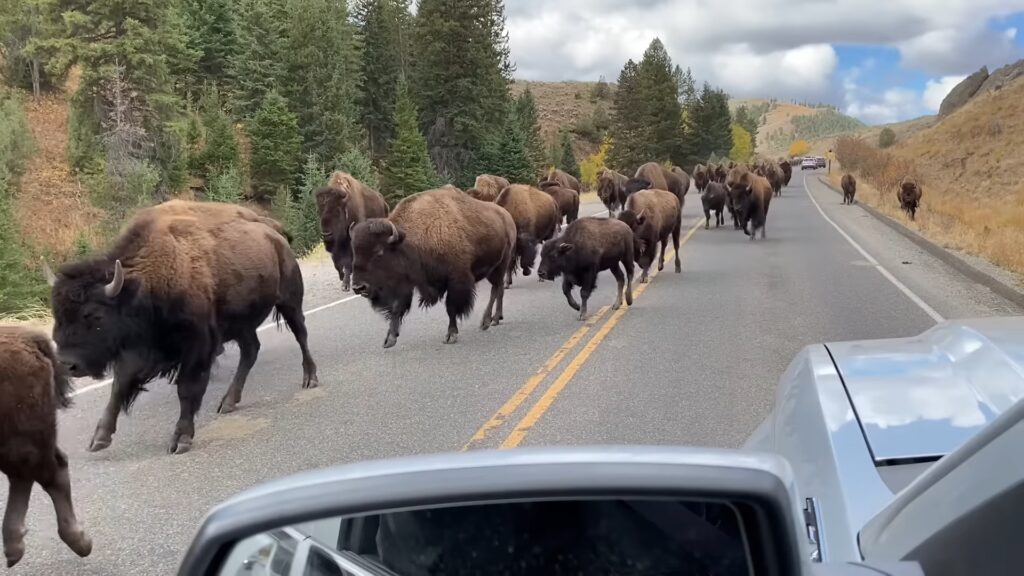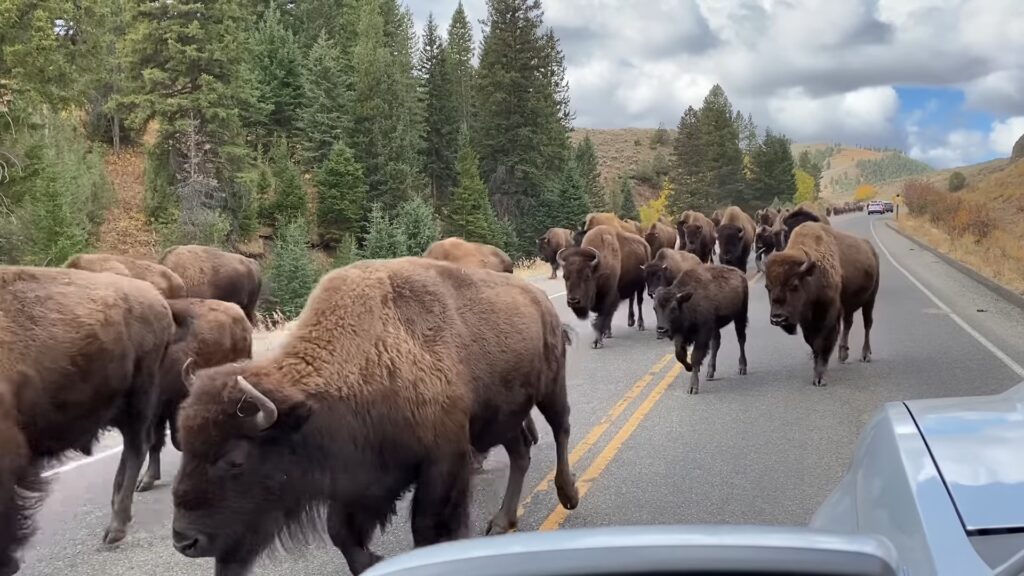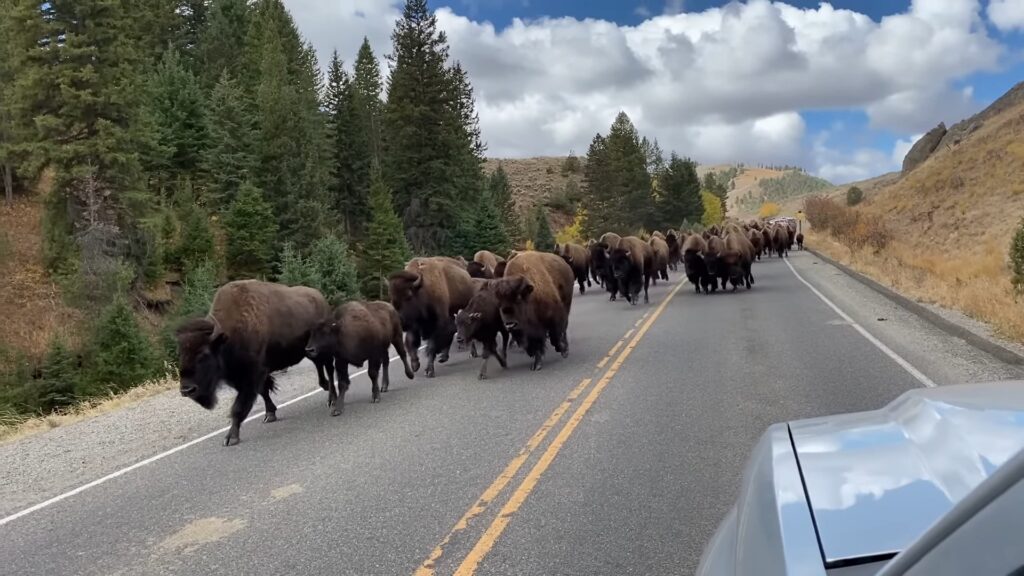The Thunder of Yellowstone: Feeling the Power of a Bison Stampede
It begins not with a roar, but with a rumble.
It’s a feeling before it’s a sound—a low-frequency hum that vibrates through the soles of your shoes and up into your chest. You’re parked on the side of a road in Yellowstone’s Lamar or Hayden Valley, watching a herd of bison graze peacefully. The scene is an American postcard: vast, golden plains, distant, snow-dusted peaks, and the quiet munching of ancient beasts.

Then, the feeling. The ground begins to tremble. A few heads lift, then a dozen, then a hundred. A subtle tension ripples through the herd, an invisible current of primal instinct. And then, it happens.
One bison bolts. Then another. Within seconds, the entire herd—hundreds, sometimes thousands of tons of muscle, horn, and shaggy fur—erupts into a thundering, earth-shaking stampede. This is not just a sight to behold; it’s a force of nature you experience with every one of your senses. It’s a living earthquake, a river of life flowing across the landscape.

What Sparks the Thunder?
A bison stampede isn’t just random chaos. It’s a spectacular display of collective consciousness and survival instinct. While it may look like a sudden, unified decision, the trigger can be surprisingly small:
- Predator Threat: The scent or sight of a wolf pack or a grizzly bear can put the entire herd on high alert. A single spooked animal can trigger a chain reaction.
- Sudden Noises: A clap of thunder, a car backfiring, or a loud, unexpected sound can be enough to send them running.
- Perceived Danger: Even something as simple as a calf getting separated or an overly aggressive bull can create a ripple of panic that escalates into a full-blown stampede.
- Sheer Exuberance: Sometimes, particularly with younger bison, a run seems to start for the simple joy of it, a powerful expression of wild energy.
Whatever the cause, the effect is the same: an awe-inspiring and terrifying demonstration of raw power. A single adult bison can weigh up to 2,000 pounds and run at speeds of 35 miles per hour. Now, imagine a hundred of them.

An American Icon: More Than Just a “Buffalo”
While we often call them buffalo, these majestic animals are technically American bison. They are North America’s largest land mammal and a true symbol of the American West. Once numbering in the tens of millions, they were driven to the brink of extinction by the late 1800s. Yellowstone became one of their last sanctuaries.
Today, the park is home to the largest and oldest free-roaming bison herd in the country, a testament to one of America’s greatest conservation success stories. Watching them move across the landscape, you’re not just seeing wildlife; you’re witnessing a piece of living history, a species that has shaped this ecosystem for millennia. They are true “ecosystem engineers,” their grazing patterns, wallows, and migrations influencing everything from soil health to plant diversity.
Witnessing the Power, Respecting the Peril
Seeing a bison stampede is a bucket-list experience for many Yellowstone visitors. The sight of their powerful legs kicking up dust, their breath misting in the cool air, and the sound of their hooves drumming against the earth is unforgettable.
But this spectacle comes with a critical reminder: these are wild, powerful, and unpredictable animals. The awe they inspire must be matched by an equal measure of respect and caution. If you are lucky enough to be near a herd, your safety (and theirs) is paramount.
Essential Yellowstone Bison Safety:
- Stay In Your Vehicle: Your car is a protective metal box. During a “bison jam” or if a herd is on the move near the road, this is the safest place to be. Roll up your windows and enjoy the show.
- Keep Your Distance: Yellowstone regulations require you to stay at least 25 yards (23 meters) away from bison at all times. This is not a suggestion; it’s a rule for your survival. If an animal reacts to your presence, you are too close.
- Never Approach Them: Do not walk toward a bison for a better photo. They can close the distance between you and them faster than you can run.
- Read Their Body Language: If a bison stops grazing to look at you, raises its tail, or paws at the ground, it’s giving you a warning. Back away slowly.
An Echo in the Soul
The stampede eventually subsides. The thunder fades back into a low rumble, and the herd settles, a cloud of dust slowly drifting away on the breeze. The silence that returns feels deeper, heavier. You’re left with a racing heart and a memory that will be etched into your mind forever.
To witness a bison stampede in Yellowstone is to be reminded of what “wild” truly means. It’s a connection to a time when the continent was untamed, a powerful, humbling, and profound experience. It’s a reminder that in these protected corners of the world, the earth can still shake, and the thunder of ancient life still reigns.